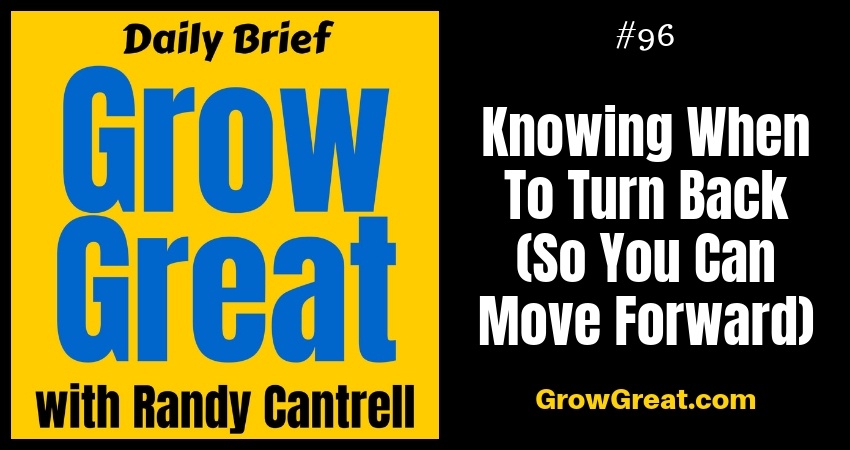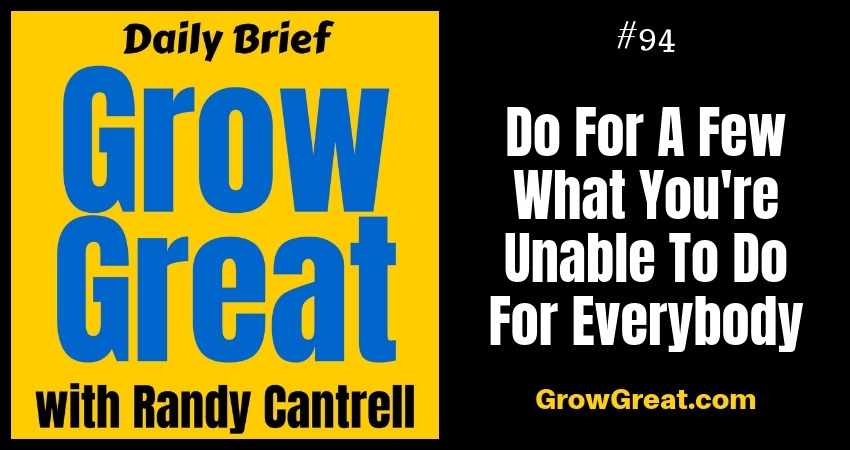Tight, Tough & Together – Grow Great Daily Brief #99 – November 7, 2018
Podcast: Play in new window | Download (Duration: 16:59 — 16.7MB)
Subscribe: Apple Podcasts | Spotify | RSS | More
I’ve coached my fair share of teams. And people. Some in sports. Some kids. Some college kids. Some in business. Some kids. Some not.
The most engaged times I’ve ever spent were leading teams best described as TIGHT, TOUGH and TOGETHER.
Listen to any sports team coach and you’ll hear the importance of these things. They’ll use terms like “chemistry” or “culture” to describe it, but these three T’s are what they really mean.
The Dallas Stars hockey club has a first-year coach, Jim Montgomery. Like most folks in hockey, Jim has a nickname, “Monty.” The team is only about a dozen games into a new season with a new coaching staff. So far, so good. The team has been on an extensive road trip playing games out of town. On Monday Monty said he was noticing the team was growing tighter. It’s noticeable on the bench during games. The team is growing because they’re getting tight, and playing tougher because they’re more together than in earlier games.
Tight.
Tough.
Together.
What about your team? Would those terms – all 3 of them – describe your employees?
Or, do you find yourself using cliches like, “The left hand doesn’t know what the right hand is doing”?
I hear far more of those cliches than CEOs who are proud to extol the virtues of their company culture. I think I know why. It seems to me that too many CEOs and entrepreneurs aren’t quite sure how to go about it. An easy barometer is to see all the outfits offering to help leaders improve culture. Another barometer is the breadth of conversation and content surrounding company or organizational culture. Lots of us are talking about it and concentrating our work on it. Doubtful we’d be doing that if there wasn’t a strong need.
Part of the challenge is the diversity of today’s workforce. When companies employee people in their 50’s, 40’s, 30’s and 20’s – those are very different people who view the world through different lenses. Employee engagement firms focus on assessments. Companies are data-driven and these companies work hard to give clients what they most want – data. The assumption is that once you know how well (or how poorly) you’re doing with employee engagement, then you’ll know how to improve it. But that’s not necessarily true.
I can go to a doctor and get an accurate diagnosis. That doesn’t mean I’m going to get well. If the doctor tells me what I need to do, I may decide to refuse. I may choose some other course of action. I may decide to do nothing. Assessments may be very helpful, but they’re not the prescription any more than our doctor’s diagnosis.
You are here. Good to know. There’s where you want to go. Also good to know. The big challenge we often face is how do we get from where we are to where we want to be.
Monty, the Dallas Stars coach, could see that his new team needed to improve the three areas of chemistry or culture. They needed to be tight, tough and together. NHL teams usually begin a season with a week away from home before the pre-season games begin. Unlike NFL teams who may spend weeks in camp before the end of the season, the NHL clubs have a different business model. For starters, they don’t have 53 players on a roster so they don’t need as much time to get their team’s roster lined out. Additionally, they’ve all got minor league teams where they develop players. The NFL has no such advantage. NFL teams play 16 regular season games. NHL teams play 82 regular season games, 41 on the road and 41 at home.
That’s an important difference because by the time the NHL teams go to their camp for a week, they’ve got their final roster. Mostly. NFL teams don’t have their final roster until after the camp is over. So the Dallas Stars go to camp with chemistry being a major goal. To develop a roster where those 3 terms are growing more important.
Tight.
Tough.
Together.
Being away from home, focused on the team helps. Road trips, especially those early in the season, can also help. Or hurt. If the team hits a losing streak during the road trip, being away from home for extended days can wreck chemistry. It’s a fragile thing.
For a professional sports team on the road, team meals, team movie night, team activities away from the rink can help. And every coach knows to have players who genuinely like each other helps, too. The tighter the bond between the players the more powerful their chemistry. It’s manifested in their willingness to perform well FOR each other, not merely for themselves. Over time, the team – THE LOCKER ROOM – becomes the thing.
I use professional sports because of the dollars spread through the roster. Unlike in your company, the compensation differences among players can be vast. A player making a few hundred thousand a year may be playing alongside a player earning in excess of $5 million a year. If ever there was an opportunity for complaining and whining, “He makes more than me!” – this is it. And you think you’ve got problems.
So far, this week a theme is emerging. We improve what we focus on. First, we started out Monday talking about people. Yesterday we talked about processes. Now, we’re talking about the merging of both I suppose so we can help our employees achieve more. To help our employees improve these 3 key areas that constitute the culture of our company.
Don’t impose what you think or feel is right.
You can make things worse without trying. Monty could deploy strategies to help his Dallas Stars’ team chemistry and end up building more resentment. CEOs and entrepreneurs do it all the time. Movie nights with the players, for example, only work because the team is in Canada, a thousand miles away from home (and their families). If he tried to impose that when the team is home, the players would feel and think, “I don’t want to spend more time with my teammates, I want to be with my family.” Why then, do I hear (with great regularity) employees complain that the boss has cooked up some event after hours? Because the boss thinks it’ll help build tight, tough and together employees. Well, it may. They’ll be tight in their opposition to the boss. Tough against whatever the boss wants. Together in their rebellion against the boss. Not quite what we’re after.
You have a team chemistry. A culture. It doesn’t matter if you meant to craft the one you’ve got or not. It is what it is. Put 3 people in a room and it’ll happen organically. It may be good. It may turn violent. You never know.
Our challenge is to create an ecosystem that will foster and encourage the positive elements of being tight, tough and together. Here are some things to consider.
One, what’s important?
The great advantage of sports is the immediate feedback. Scores. Teams know if they’re winning or losing. And they know for a fact if they’ve won or lost. We operate daily often not knowing any of that. And our people don’t either. That’s a problem.
How we do overcome that? We establish our identity based on what’s important to us. I know a company that claims they want to be “the world’s best.” It sounds great, if not overly lofty. But they don’t operate as though they’re the world’s best (or trying to be). The employees don’t believe it. It just seems laughable and empty.
Walk the talk. Establish priorities and live them. The best customer service companies eat, drink and sleep it. Amazon. Walmart. Honda. It’s not a by-product, but a focus.
Figure out what matters most and make sure you’re following it religiously. People inside and outside your company will notice. Behavior will follow.
Two, reward and punish based on what’s important.
Hockey teams have a fundamental reward system. It’s called “ice time.” Players who perform well get more playing time. Players who don’t, get less. If a player isn’t performing well enough – or not following the coaching – then he may find himself “scratched” from a game, meaning he’s not even on the bench. Or players unable to perform at the high level required may be sent down to a minor league team where they’ll have to prove themselves worthy of rejoining the major team. Reward and punish. (I’m clearly using punish in the sense of consequences intended to serve the team and the player)
High achievers don’t enjoy being tethered to low achievers. Mediocre achievers can find acceptance if they’re putting in the effort to improve, but if they’re not – teams will reject them. Take a look at your roster and get real with yourself on where the rewards and punishments are. You may be rewarding the wrong things. And punish the wrong things, too. It’s a common mistake.
I’m reminded of the Simpson’s episode where Homer skipped out of work on a Thursday. The boss found out and talked to him on the phone ripping into him. The boss says, “If you don’t come in tomorrow, don’t’ bother coming in on Monday.” Homer, being Homer, hangs up the phone thrilled. “Woohoo, four day weekend!” Sometimes we do things intending one thing, but it really accomplishes something different. Something we never intended.
You have to make your rewards and punishments consistent with what matters most to your company.
Three, establish and maintain non-negotiable standards. Context matters.
Your company – like any sports team – has to learn how to win. Sometimes our people learn how to lose and find it really hard to get unstuck from that. Multi-million dollar athletes do the same thing. They find a slump that seems like it’ll never end. Coaches know their players and figure out how to lead them individually. One size does not fit all. People aren’t equal. You can be fair, but that doesn’t mean you’re equal.
It’s all about establishing and maintaining non-negotiable standards for the company and for the individual employees. There’s US, then there’s YOU (the employee).
Where does the individual employee fit? That’s their context. I’m rolling these two together for this last point because I think they belong together. There are team standards and there are individual standards within the context of the team.
The top players on the Dallas Stars have a higher expectation. In hockey there are typically four lines, meaning three players go onto the ice and play together. One line consists of these same 3 players. The lines are numbered 1 through 4. Fourth line players know their role, which is often to defend against the other team’s top lines. The coaching staff doesn’t expect that line to score enough goals to win games. If it happens, it’s a good thing, but it’s not the standard for the 4th line. Their non-negotiable standard is to not give up a goal. Lines usually play for just 45 seconds at a time, then the next group jumps onto the ice. That first line knows their non-negotiable standard is to score goals.
Then, within each line are players with different skills and talents. Some are gifted at scoring goals. Others are playmakers, able to make passes to the guys who can score goals. Some are great at playing pucks in the corners of the rink. Others love all that rough stuff in front of the opposing goal. The context of each player plays a big role in helping players understand how they can best contribute.
I talk pretty regularly about not painting all your employees with the same broad brush. It’s important that you spend time with individual employees and know what they’re able to most contribute to the whole. It’s rewarding for them, and your company.
By the way, I define non-negotiable standards as standards that could cost a player (an employee) their role. Their job. You get what you reward or whatever you tolerate. Tolerate toxicity and you’ll have a toxic culture. That’s why standards matter. Context helps you serve the toxic employee individually to better understand how their behavior is hurting them and everybody else.
Tight. Tough. Together. It doesn’t happen accidentally. Leaders foster it. They create it. Build it. The great ones never let it slip – or for very long.
Be well. Do good. Grow great!

Tight, Tough & Together – Grow Great Daily Brief #99 – November 7, 2018 Read More »
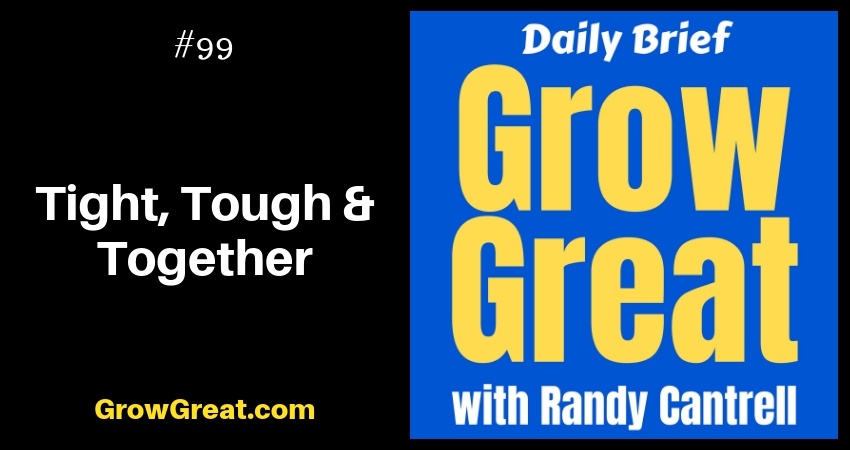
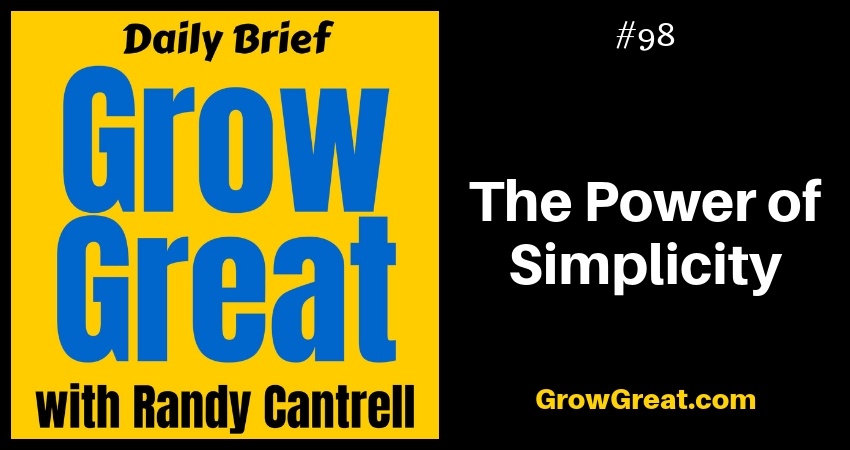


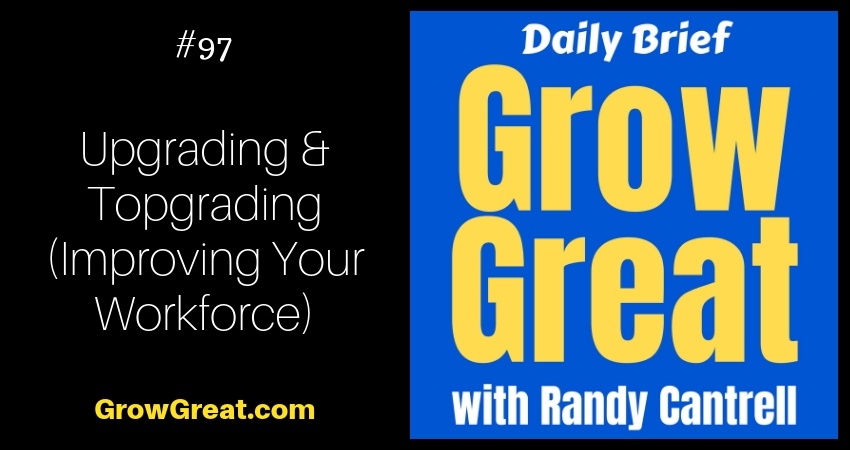
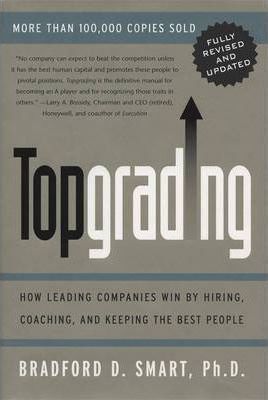 Across all sectors, it seems people are challenged to upgrade, or topgrade their workforce. “Topgrading: How Leading Companies Win by Hiring, Coaching and Keeping the Best People” by Bradford D. Smart was a book published in 1999. It spoke of the need to have superior people if you’re going to build a superior company. Mr. Smart’s advice – and his company – focus on being able to assess people so you can acquire top level talent.
Across all sectors, it seems people are challenged to upgrade, or topgrade their workforce. “Topgrading: How Leading Companies Win by Hiring, Coaching and Keeping the Best People” by Bradford D. Smart was a book published in 1999. It spoke of the need to have superior people if you’re going to build a superior company. Mr. Smart’s advice – and his company – focus on being able to assess people so you can acquire top level talent.